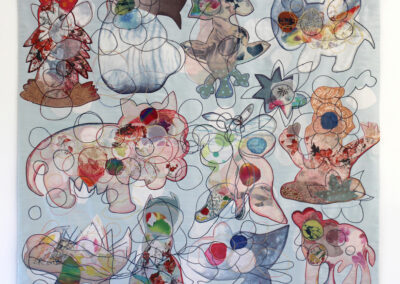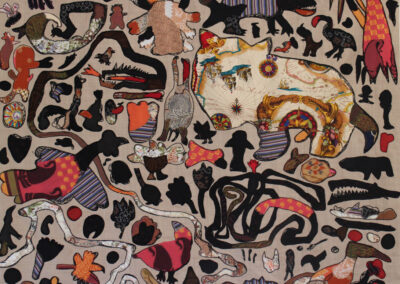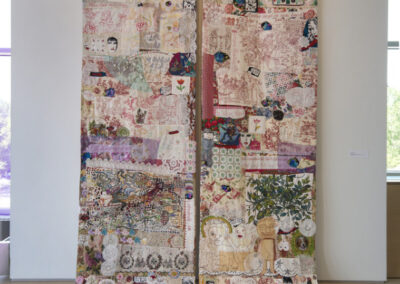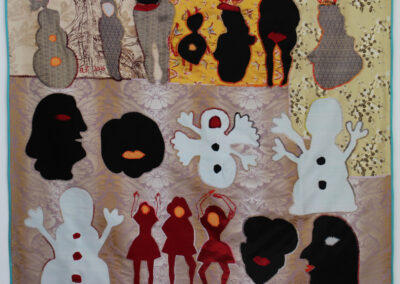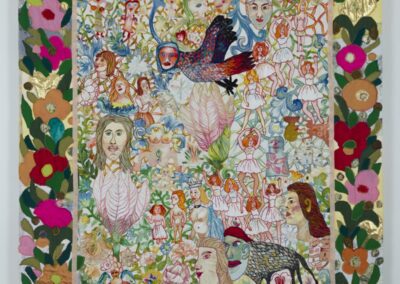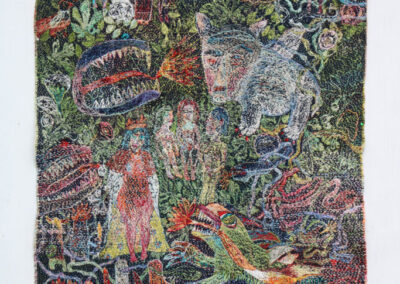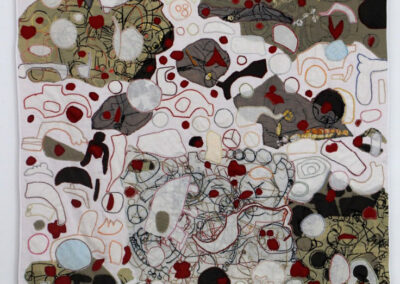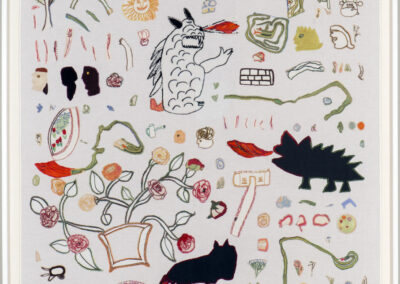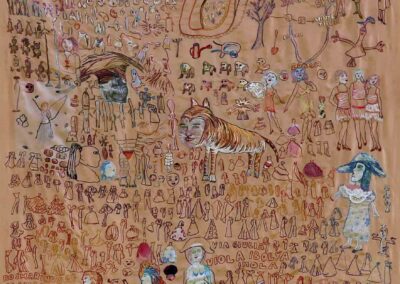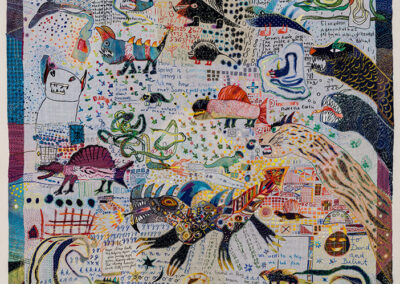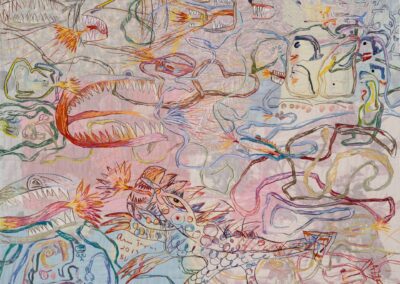The next Artist You Need To Know is Anna Torma. For nearly half a century, Torma has exhibited across Canada, as well as internationally, with numerous private and public collections holding her work. Torma is best known for her large-scale hand embroidered wall hangings and collages. Her interest in working with textiles goes back to early childhood when she learned to sew, knit, crochet and embroider from her mother and grandmothers.
Originally from Hungary, she earned a degree in Textile Art and Design from the Hungarian University of Applied Arts, Budapest (1979). Torma now lives and works in Baie Verte, New Brunswick, having emigrated to Canada in 1988. In 2020, she was honoured with the Governor General’s Award in Visual and Media Arts – Saidye Bronfman award. A member of the Royal Canadian Academy of Arts, Torma has also received the New Brunswick Lieutenant-Governor’s Award for High Achievement in Visual Arts, and the Strathbutler Award from the Sheila Hugh Mackay Foundation.
-

Abandoned Details VII, 2018
-

Biomorph II, 2021
-

Biomorph IV, 2021
-

Random Landscape I-III, 2015
-

Carpet of Many Hands, 2012-2018
-

Pedagogical charts 3, 2019
From an article Anna Torma published with Canadian Art, in Winter of 2021: “The artworks I make in my garden-side studio are textile objects, embroidered by hand. I often use a linen base and silk threads, the best materials to complete fine needlework. Strong narrative elements with darker undertones usually dominate the surface of my pieces: I work with the idea of Dionysian feelings, portraying male and female figures interlaced by real and imagined vegetation, suggesting connectedness in an earthly microcosm. I also want to show the enjoyment and appreciation of myths and legends of different cultures, sexualities, flowers, fruits, colours, and living and imagined creatures, seeing the environment and human identity as a whole but fragile, and always changing, subject.”
Her work can be found in the collections of the Museum of Arts and Design, in New York City; the Art Gallery of Nova Scotia, in Halifax; La Peau de l’Ours, Montreal, QE; Foreign Affairs Art Collection, Ottawa,ON; MSVU Art Gallery Collection, Halifax, NS; New Brunswick Art Bank Art Collection, Fredericton, NB; Mint Museum of Craft and Design in Charlotte, NC; Contemporary Textile Collection, Szombathely, Hungary, and the Beaverbrook Art Gallery, in Fredericton.
Her major solo exhibition, Bagatelles, was mounted first at the New Brunswick Museum, Saint John (2012), then travelled to Bellevue Arts Museum, Seattle (2013), and the Karsh-Masson Gallery, Ottawa (2014).
-

Dionysia, 2020
-

Party with Dionysos, 2008–2015
-

Pedagogical Charts 1, 2016
-

Permanent Danger, 2017
-

Transverbal X, 2019
-

Abandoned Details II, 2018
In 2018, she had an exhibition at the Esker Foundation titled Anna Torma: Book of Abandoned Details: “As a descendant of generations of skilled needleworkers and embroiderers, Anna Torma produces work that is both rooted in a deep Hungarian textile tradition and is also part of a vibrant contemporary practice connected to radical feminist avant-garde movements of the 1960s and 70s, which reclaimed craft and fibre-based work as urgent and political fine art practices. Through the synthesis of techniques such as embroidery, drawing, collaging, dyeing, free-hand quilting, appliqué, and photo transfer, Torma’s work offers us an extraordinary world in which the domestic and the fantastic collide in lush imagery drawn from familial history, books and literature, real and imagined places, mythology and folklore, flora and fauna, and personal and cultural memory.”
Curator and critic James Campbell has written that Anna Torma “is a born storyteller who draws upon a wide array of textile traditions and techniques, including appliqué, felting, photo transfer, collage, and quilting. She has come far from the rag dolls of her childhood in rural Hungary, scavenging imagery from diverse sources such as medical anatomical drawings, folk art, and even her own children’s drawings. Whether working with fine silk, raw hemp, mercerized cotton, man made fabric or found needlework, Torma makes all those materials irremediably and recognizably her own.” (from here)
Torma’s exhibition Encyclopaedia Domestica at the Ideas Exchange has numerous installation shots that give a greater sense of the monumental scale of many of her works: that can be seen here.
Much more of Anna Torma’s work can be enjoyed here.

